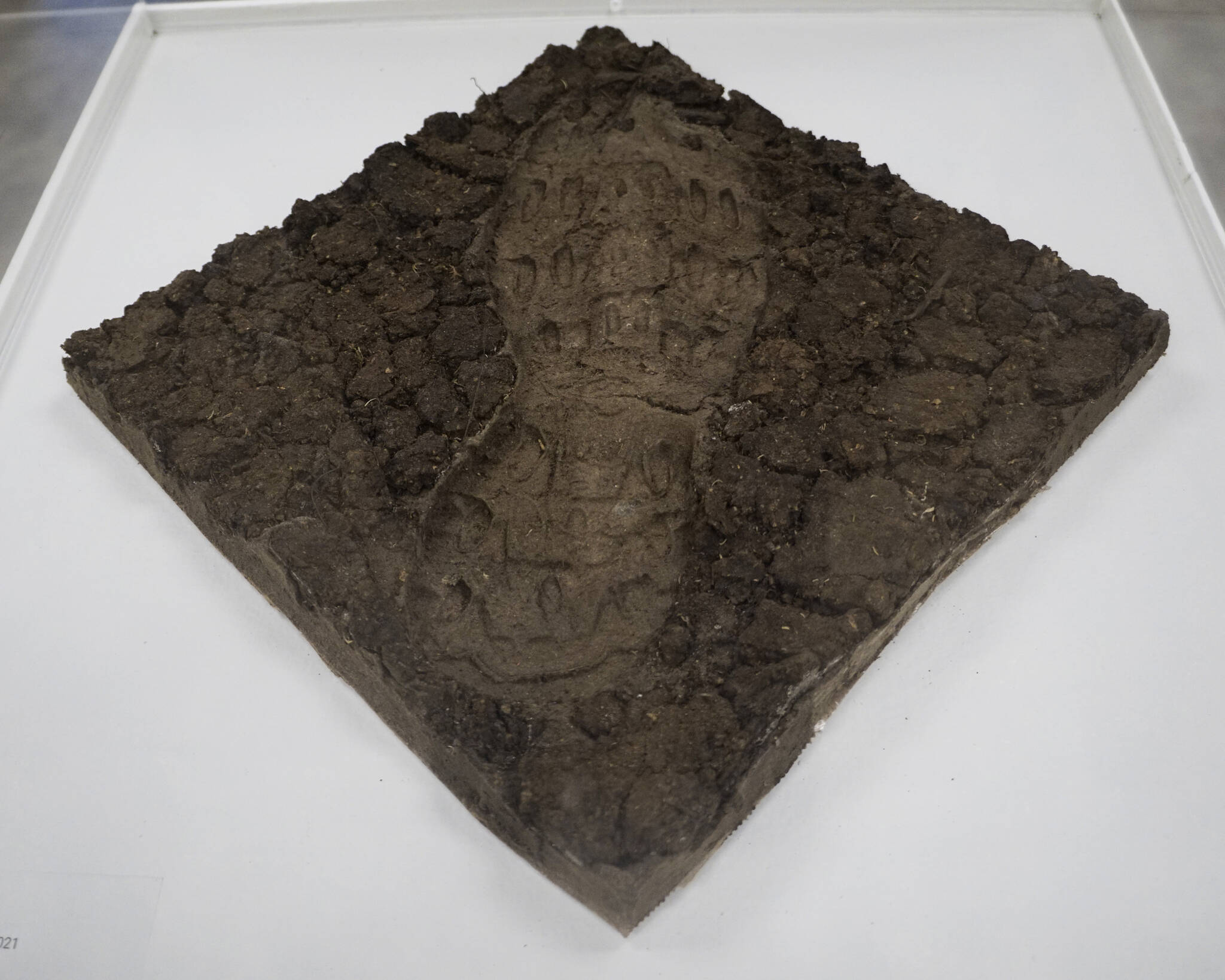In its exhibits, the Pratt Museum & Park has used artistic expression to explore scientific concepts like plankton, the tides or — in a current show in the main gallery — the microbial world. Last Friday, the museum held a reception for its latest such effort, the Homer Drawdown Peatland exhibit.
The exhibit caps a yearslong effort by the Homer Drawdown project to identify a locally sustainable way to reduce or capture carbon emissions. Homer Drawdown explored various ideas and decided its best efforts should go toward preserving and protecting an ecosystem that’s twice as effective in capturing carbon as planting trees: peatlands.
Working with the Center for Alaskan Coastal Studies and Kachemak Bay Research Reserve, Homer Drawdown has been doing peatland surveys and studies. With the Kachemak Heritage Land Trust, it’s also raising funds to protect valuable peatlands. For the Peatland exhibit, Homer Drawdown worked with the Bunnell Street Arts Center and its sponsorship of Artist in Residence Sheryl Maree Reily. The Peatland exhibit also invited about a dozen artists to show their work with Reily at the Pratt in its downstairs gallery.
Bunnell Artistic Director Asia Freeman acknowledged that collaboration in a talk last Friday for the exhibit.
“It encourages that kind of interplay between organizations, and expands our communities with science, art and culture,” she said of the Pratt.
On its website, Homer Drawdown describes peat as “dead plant matter that has accumulated in standing water over thousands of years.” At last Friday’s presentation, long rods used for chimney brushes illustrated how deep some peat layers could be — up to 30 feet or more. Maps showed notable area peatlands. On the Kenai Peninsula, most peatlands are fenns, areas nourished by groundwater. Bogs are areas nourished by rainfall runoff. Peatlands capture carbon because dead plants don’t decompose in oxygen-poor standing water.
As long as peatlands remain intact, that carbon won’t be released and carbon will continue to be captured as plants grow and die in standing water. In Homer, one of the largest and most visible peatlands is Beluga Slough, Beluga Lake and the surrounding area that includes the Homer Airport and industrial zones along Kachemak Drive. If the peatlands dry up, that can release the carbon, accelerating climate change and warming.
“We’re both on the brink of sitting on a bomb and sitting on a valuable asset, depending on how you treat it,” Reily said at the presentation.
Reily’s artwork and installation makes up most of the Homer Drawdown Peatland exhibit, including a large piece, “Carbon Quilt,” an array of different peatland plants. Her installation also includes a video and sculptures, some of them playful, like “Carbon Footprint,” a cast in peat of a boot sole impression. Freeman said Bunnell invited Reily too because they wanted an artist who could help Homer Drawdown and communicate through the arts the importance of peatlands. For her residency, Reily explored area peatlands and studied the concept.
“On a gut level, I kinda feel like you’re starting something here that’s on the forefront of thought and action, that’s going to very much be a conversation in Alaska, in the future, because of the stores of carbon we have in this state,” she said.
Reily mentioned an article she had read in the Washington Post about plants in Iceland being nurtured because they suck up carbon.
“Here in Homer, you have carbon sucking plants all around you,” she said. “It’s ironic you’re creating this thing if you would just stop destroying this thing.”
Another piece, “Gigabyte,” represents Reily’s attempts to conceptualize a large number like how much carbon there is. She said she can’t imagine a number like 600 blue whales. With dashes and dots, the slab-like sculpture represents binary computer code.
“What I did in the end was this idea of a byte,” she said. “… It’s a little tongue-in-cheek creating this little gigabyte, but it’s also a metaphor for a trilobite.”
That adds another layer of meeting, because the trilobite is an ancient fossil related to a previous mass extinction.
“This gigabyte right now, we’re on the verge of another mass extinction,” Reily said.
Freeman said other artists, including herself, made works for the exhibit because the subject matter is deeply important to them. Freeman had several paintings and large photographs. She made the photographs by stacking up 35mm film exposures.
“It’s really about the incredible beauty of this place,” she said. “… When you take a photograph like this, you’re mapping the microcosm.”
Of her paintings, Freeman mentioned encaustic paintings in the show by Kathy Smith and how both of them had studied with Freeman’s mother, the artist and teacher Karla Freeman.
“It’s like a family language and a community language,” Freeman said.
Another artist, Kim McNett, comes at her art through her work as a naturalist. McNett noted that she had been involved in the Homer Drawdown.
“I very much foster my relationship with nature through my artistic project by keeping a nature journal,” she said.
For her piece, McNett assembled a journal using selected pages of her field journal that chronicled how peatlands in her Kachemak Drive neighborhood change over the season. McNett also got some applause at last Friday’s presentation: She has been selected to do a peatland mural that will be installed at the Homer Airport.
Reach Michael Armstrong at marmstrong@homernews.com.

